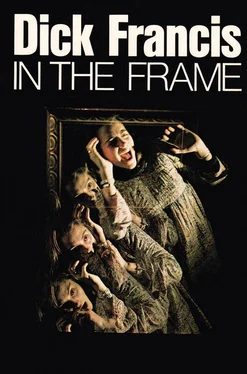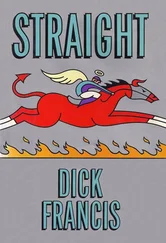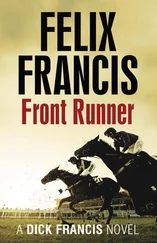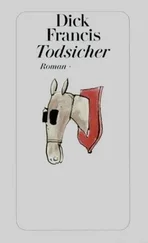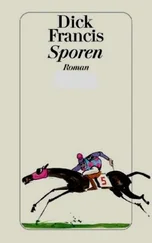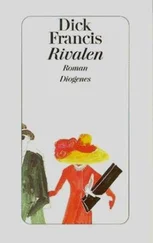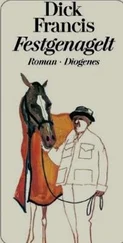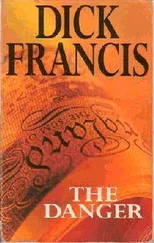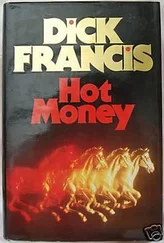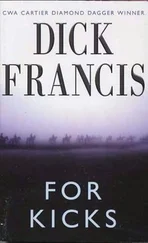‘I suppose one would get used to it, if one lived here,’ Jik said. ‘Thank God Sarah’s got her hat.’
We dodged in and out of the shadows of overhanging trees and the local inhabitants marched around bareheaded as if the branding-iron in the sky was pointing another way. The Yarra River gallery was quiet and air conditioned and provided chairs near the entrance for flaked-out visitors.
As Jik had prophesied, all visible space was knee deep in the hard clear watercolour paintings typical of the disciples of Namatjira. They were fine if you liked that sort of thing, which on the whole I didn’t. I preferred the occasional fuzzy outline, indistinct edge, shadows encroaching, suggestion, impression, and ambiguity. Namatjira, given his due as the first and greatest of the Aboriginal artists, had had a vision as sharp as a diamond. I vaguely remembered reading somewhere that he’d produced more than two thousand paintings himself, and certainly his influence on the town where he’d been born had been extraordinary. Eleven art galleries. Mecca for artists. Tourists buying pictures by the ton. He had died, a plaque on the wall said, in Alice Springs hospital on August 8th 1959.
We had been wandering around for a good five minutes before anyone came. Then the plastic strip curtain over a recessed doorway parted, and the gallery keeper came gently through.
‘See anything you fancy?’ he said.
His voice managed to convey an utter boredom with tourists and a feeling that we should pay up quickly and go away. He was small, languid, long-haired and pale, and had large dark eyes with drooping tired-looking lids. About the same age as Jik and myself, though a lot less robust.
‘Do you have any other pictures?’ I asked.
He glanced at our clothes. Jik and I wore the trousers and shirts in which we’d gone to the races: no ties and no jackets, but more promising to picture-sellers than denims. Without discernible enthusiasm he held back half of the strip curtain, inviting us to go through.
‘In here,’ he said.
The inner room was bright from skylights, and its walls were almost entirely covered with dozens of pictures which hung closely together. Our eyes opened wide. At first sight we were surrounded by an incredible feast of Dutch interiors, French impressionists and Gainsborough portraits. At second blink one could see that although they were original oil paintings, they were basically second rate. The sort sold as ‘school of’ because the artists hadn’t bothered to sign them.
‘All European, in this room,’ the gallery keeper said. He still sounded bored. He wasn’t Australian, I thought. Nor British. Maybe American. Difficult to tell.
‘Do you have any pictures of horses?’ I asked.
He gave me a long steady peaceful gaze. ‘Yes we do, but this month we are displaying works by native Australians and lesser Europeans.’ His voice had the faintest of lisps. ‘If you wish to see horse paintings, they are in racks through there.’ He pointed to a second plastic strip curtain directly opposite the first. ‘Are you looking for anything in particular?’
I murmured the names of some of the Australians whose work I had seen in Melbourne. There was a slight brightening of the lack-lustre eyes.
‘Yes, we do have a few by those artists.’
He led us through the second curtain into the third, and from our point of view, most interesting room. Half of it, as promised, was occupied by well-filled double tiers of racks. The other half was the office and packing and framing department. Directly ahead a glass door led out to a dusty parched-looking garden, but most of the lighting in here too came from the roof.
Beside the glass door stood an easel bearing a small canvas with its back towards us. Various unmistakable signs showed work currently in progress and recently interrupted.
‘Your own effort?’ asked Jik inquisitively, walking over for a look.
The pale gallery keeper made a fluttering movement with his hand as if he would have stopped Jik if he could, and something in Jik’s expression attracted me to his side like a magnet.
A chestnut horse, three-quarters view, its elegant head raised as if listening. In the background, the noble lines of a mansion. The rest, a harmonious composition of trees and meadow. The painting, as far as I could judge, was more or less finished.
‘That’s great,’ I said with enthusiasm. ‘Is that for sale? I’d like to buy that.’
After the briefest hesitation he said, ‘Sorry. That’s commissioned.’
‘What a pity! Couldn’t you sell me that one, and paint another?’
He gave me a small regretful smile. ‘I’m afraid not.’
‘Do tell me your name,’ I said earnestly.
He was unwillingly flattered. ‘Harley Renbo.’
‘Is there anything else of yours here?’
He gestured towards the racks. ‘One or two. The horse paintings are all in the bottom row, against the wall.’
We all three of us pulled out the paintings one by one, making amateur-type comments.
‘That’s nice,’ said Sarah, holding a small picture of a fat grey pony with two old-fashioned country boys. ‘Do you like that?’ She showed it to Jik and me.
We looked at it.
‘Very nice,’ I said kindly.
Jik turned away as if uninterested. Harley Renbo stood motionless.
‘Oh well,’ Sarah said, shrugging. ‘I just thought it looked nice.’ She put it back in the rack and pulled out the next. ‘How about this mare and foal? I think it’s pretty.’
Jik could hardly bear it. ‘Sentimental tosh,’ he said.
Sarah looked downcast. ‘It may not be Art, but I like it.’
We found one with a flourishing signature; Harley Renbo. Large canvas, varnished, unframed.
‘Ah,’ I said appreciatively. ‘Yours.’
Harley Renbo inclined his head. Jik, Sarah and I gazed at his acknowledged work.
Derivative Stubbs-type. Elongated horses set in a Capability Brown landscape. Composition fair, anatomy poor, execution good, originality nil.
‘Great,’ I said. ‘Where did you paint it?’
‘Oh... here.’
‘From memory?’ Sarah said admiringly. ‘How clever.’
Harley Renbo, at our urging, brought out two more examples of his work. Neither was better than the first, but one was a great deal smaller.
‘How much is this?’ I asked.
Jik glanced at me sharply, but kept quiet.
Harley Renbo mentioned a sum which had me shaking my head at once.
‘Awfully sorry,’ I said. ‘I like your work, but...’
The haggling continued politely for quite a long time, but we came to the usual conclusion, higher than the buyer wanted, lower than the painter hoped. Jik resignedly lent his credit card and we bore our trophy away.
‘Jesus Christ,’ Jik exploded when we were safely out of earshot. ‘You could paint better than that when you were in your cradle. Why the hell did you want to buy that rubbish?’
‘Because,’ I said contentedly, ‘Harley Renbo is the copier.’
‘But this,’ Jik pointed to the parcel under my arm, ‘Is his own abysmal original work.’
‘Like fingerprints?’ Sarah said. ‘You can check other things he paints against this?’
‘Got brains, my wife,’ Jik said. ‘But that picture he wouldn’t sell was nothing like any Munnings I’ve ever seen.’
‘You never look at horse paintings if you can help it.’
‘I’ve seen more of your pathetic daubs than I care to.’
‘How about Raoul Millais?’ I said.
‘Jesus.’
We walked along the scorching street almost without feeling it.
‘I don’t know about you two,’ Sarah said. ‘But I’m going to buy a bikini and spend the rest of the day in the pool.’
We all bought swimming things, changed into them, splashed around for ages, and laid ourselves out on towels to dry. It was peaceful and quiet in the shady little garden. We were the only people there.
Читать дальше
